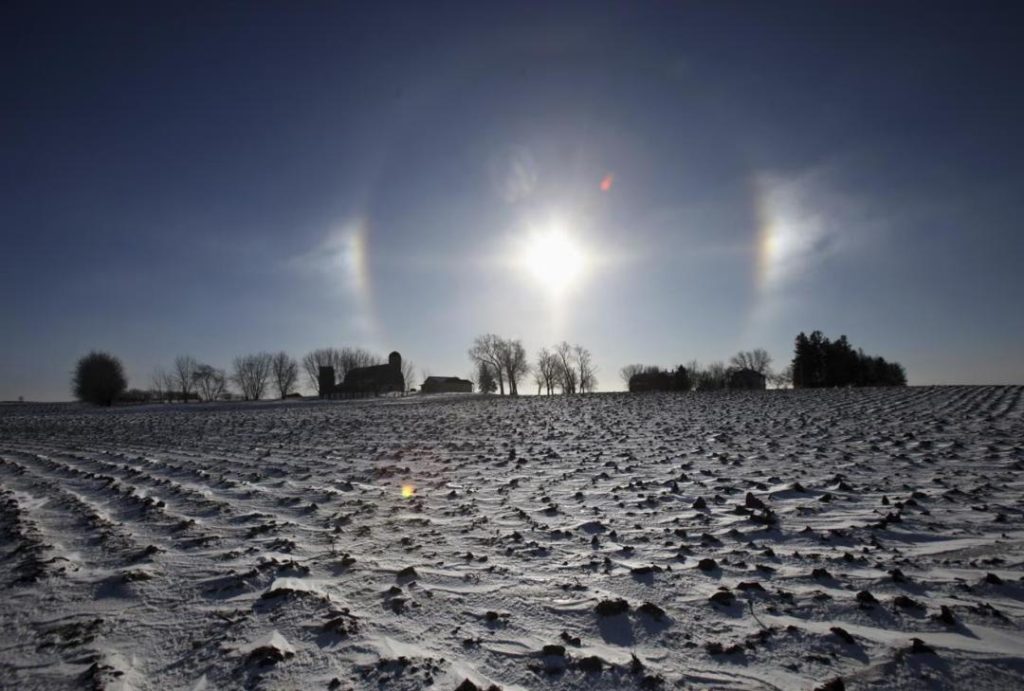
What are Sundogs?
Have you ever seen a breathtaking display of colorful lights in the sky, seemingly dancing around the sun? These dazzling spectacles are known as sundogs, and they are a fascinating phenomenon that has captivated the attention of scientists and laypeople alike for centuries. Sundogs, also known as parhelia, are bright, colored spots of light that appear on either side of the sun, typically 22° away from its center. In this blog post, we’ll delve into the science behind sundogs, explore their characteristics, and discuss the latest research that suggests they might even occur on planets light-years away.
What Causes Sundogs?
Sundogs are formed when sunlight passes through ice crystals in the atmosphere at a precise angle. This refraction of light is responsible for the colorful display we see in the sky. The colors of the sundog typically follow the order of the rainbow, with red appearing closest to the sun and blue on the outside. The unique combination of sunlight, ice crystals, and atmospheric conditions creates the perfect conditions for sundogs to occur.
Characteristics of Sundogs
Sundogs are relatively rare and can be difficult to spot, even on days when the conditions are favorable. They are usually seen in cold climates, where the air is filled with ice crystals, and are more common during the winter months. Sundogs can appear as single spots or as a pair, depending on the position of the sun and the observer. They can also change shape and size as the observer moves or the sun shifts in the sky.
New Research Suggests Sundogs Might Occur on Other Planets
In a recent research study, scientists have discovered that sundogs might not be exclusive to Earth. According to the study, sundogs could occur on other planets with atmospheres that contain ice crystals, such as those with water or methane. This groundbreaking research has significant implications for our understanding of atmospheric science and the possibility of life on other planets.
The study, published in the journal Nature, used computer simulations to model the behavior of sunlight as it passes through the atmospheres of various planets. The researchers found that sundogs could occur on planets with conditions similar to those on Earth, including those with thick atmospheres and abundant ice crystals.
Observing Sundogs
While sundogs are relatively rare, they can be observed with the naked eye or through a camera. To increase your chances of spotting a sundog, look for the following conditions:
- A cold climate with plenty of ice crystals in the air
- A sunny day with a clear sky
- The sun at an angle of around 22° from your position
When you spot a sundog, take note of its color, size, and shape. You can also try taking photos or videos to capture the phenomenon and share it with others.
Conclusion
Sundogs are a breathtaking and awe-inspiring phenomenon that has fascinated humans for centuries. From their scientific explanation to their potential occurrence on other planets, sundogs offer a unique glimpse into the fascinating world of atmospheric science. Whether you’re a scientist or simply a nature enthusiast, observing sundogs can be a thrilling experience that enhances our appreciation for the beauty and complexity of our planet.
News Source:
https://earthobservatory.nasa.gov/blogs/earthmatters/2014/02/03/reader-pics-sundogs/
About the Author:
[Your Name] is a content writer with a passion for science and nature. With a background in environmental science, [Your Name] enjoys exploring the fascinating world of atmospheric science and sharing their discoveries with others.






